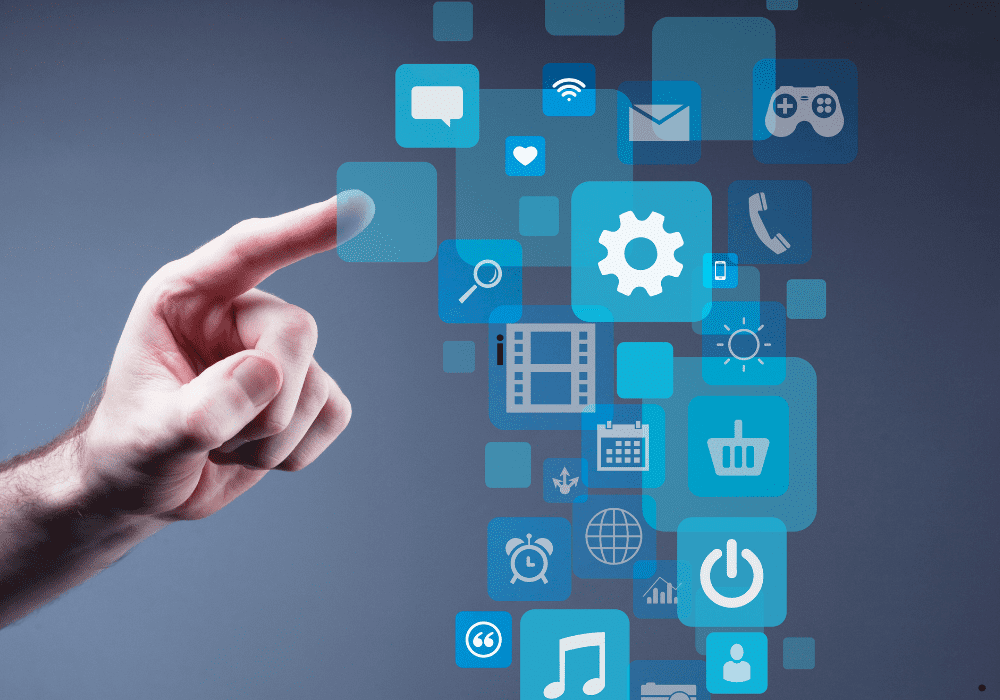Digital Tech Time: The Future of Technology and How It Shapes Our Lives
In today’s fast-paced world, the term Digital Tech Time has become synonymous with innovation, progress, and the rapid transformation of how we live, work, and interact. As technology continues to evolve at an unprecedented rate, it is reshaping industries, societies, and even our day-to-day activities. The phrase Digital Tech Time embodies this exciting era of digital evolution, where advancements in artificial intelligence (AI), blockchain, cloud computing, and other cutting-edge technologies are driving change across the globe.
This article delves deep into Digital Tech Time—what it means, how it’s impacting different sectors, and what the future holds. Whether you’re a business professional, a tech enthusiast, or someone curious about how technology is shaping the future, this comprehensive guide will offer valuable insights into the world of Digital Tech Time.
Introduction to Digital Tech Time
Digital Tech Time refers to the current and upcoming phases of digital evolution characterized by the integration of advanced technologies in every aspect of our lives. This era is marked by rapid advancements in computing power, connectivity, and data analysis, which are revolutionizing industries, improving productivity, and reshaping the global economy.
The phrase Digital Tech Time captures the essence of this transformation—a period where digital technologies, including AI, blockchain, the Internet of Things (IoT), and cloud computing, play pivotal roles in how businesses, governments, and individuals operate.
As society continues to rely on digital solutions to meet growing demands, understanding and adapting to Digital Tech Time is critical for both individuals and organizations looking to stay ahead.
The Rise of Digital Tech Time and Its Global Impact
The rise of Digital Tech Time can be traced back to the advent of the internet and the subsequent digital revolution, but it has rapidly accelerated over the past decade. With the proliferation of smartphones, cloud-based services, and AI-powered tools, tech bee digital cycle timer is now influencing every facet of life—from the way we communicate to how we shop, work, and learn.
Globally, Digital Tech Time has had a profound impact on economies, leading to the creation of new industries, job opportunities, and business models. Digital technologies have enabled seamless communication, improved healthcare, enhanced education, and revolutionized financial systems. This global digital transformation is bridging geographical gaps and creating a more connected, efficient, and innovative world.
Key Technologies Driving the Digital Tech Time Movement
Several key technologies are driving the Digital Tech Time movement. These innovations are powering the transformation of industries, enhancing the efficiency of operations, and enabling new possibilities.
Artificial Intelligence (AI)
At the forefront of Digital Tech Time is AI, which is changing the way we approach problem-solving, decision-making, and automation. AI algorithms can analyze vast amounts of data, make predictions, and automate tasks, leading to more efficient operations in sectors such as healthcare, finance, and manufacturing.
Blockchain Technology
Blockchain is another key technology in Digital Tech Time that provides transparency, security, and decentralization. Initially developed for cryptocurrency transactions, blockchain is now being used in various industries to track supply chains, manage contracts, and secure sensitive data.
The Internet of Things (IoT)
The Internet of Things is connecting devices, systems, and machines to the internet, allowing for real-time data collection and analysis. In Digital Tech Time, IoT is enhancing industries like manufacturing, agriculture, and healthcare by enabling predictive maintenance, smart agriculture, and remote patient monitoring.
Cloud Computing
Cloud computing is one of the foundational technologies of major tech digital timer instructions enabling organizations to store, access, and process data over the internet. The flexibility and scalability of cloud services are helping businesses reduce infrastructure costs, enhance collaboration, and improve agility.
5G and Connectivity
The rollout of 5G networks is accelerating the tech bee digital cycle timer revolution by providing faster, more reliable internet connectivity. This enhanced connectivity is driving innovations in autonomous vehicles, smart cities, and real-time data analytics, making Digital Tech Time a reality for businesses and consumers alike.
How Digital Tech Time is Transforming Industries

Digital Tech Time is having a transformative impact on various industries, revolutionizing processes, improving efficiency, and opening up new opportunities.
Healthcare
In the healthcare industry,major tech digital timer instructions is enabling telemedicine, AI-driven diagnostics, and personalized treatment plans. Wearable devices that track health metrics, AI algorithms that predict disease progression, and digital health platforms are improving patient outcomes and reducing costs.
Education
Digital Tech Time has led to the growth of online learning platforms, virtual classrooms, and AI-powered tutoring systems. These tools make education more accessible and personalized, allowing students to learn at their own pace and from anywhere in the world.
Finance and Fintech
The financial industry is being reshaped by Digital Tech Time through innovations in fintech, such as digital wallets, blockchain-based transactions, and AI-powered trading algorithms. These technologies are improving financial inclusion, increasing transparency, and enabling faster, more secure transactions.
Retail and E-commerce
Retail is undergoing a digital transformation, with Digital Tech Time driving innovations like personalized shopping experiences, AI-driven product recommendations, and automated supply chain management. E-commerce platforms are using data analytics to predict customer behavior, while smart warehouses and autonomous delivery vehicles improve logistics.
Manufacturing and Automation
In manufacturing, Digital Tech Time is powering automation through robotics, IoT, and AI. Factories are becoming more efficient with predictive maintenance, real-time data analysis, and the use of collaborative robots that work alongside humans to enhance production.
Digital Tech Time and the Future of Work
Digital Tech Time is significantly reshaping the future of work, introducing new job roles, changing workplace dynamics, and creating the need for new skills.
Remote Work and Digital Collaboration Tools
The COVID-19 pandemic accelerated the adoption of remote work, and Digital Tech Time has made it possible for employees to work from anywhere using cloud-based collaboration tools, video conferencing platforms, and project management software. These digital solutions are improving productivity and work-life balance.
AI in the Workplace
AI is transforming the workplace by automating repetitive tasks, analyzing data, and assisting with decision-making. In major tech digital timer instructions , AI-powered virtual assistants and chatbots are enhancing customer service, while AI algorithms streamline HR processes such as recruitment and employee engagement.
Reskilling and Upskilling in the Digital Age
As Digital Tech Time progresses, the demand for digital skills is growing. Employees and job seekers need to adapt by learning new skills in AI, data science, cloud computing, and cybersecurity. Reskilling and upskilling programs are essential for preparing the workforce for the jobs of the future.
The Role of Digital Tech Time in Data and Privacy
As more data is generated and collected in tech bee digital timer instructions, ensuring data privacy and security is critical. With the rise of AI, IoT, and cloud computing, vast amounts of personal and organizational data are being processed and stored.
To protect sensitive information, businesses must adopt robust cybersecurity measures, including encryption, multi-factor authentication, and data anonymization. Privacy regulations such as the General Data Protection Regulation (GDPR) in Europe and the California Consumer Privacy Act (CCPA) in the U.S. are also shaping how organizations handle data in Digital Tech Time.
Digital Tech Time and Sustainability: How Technology is Reducing Our Carbon Footprint

Digital Tech Time is not only transforming industries but also playing a vital role in sustainability efforts. Technologies like AI, IoT, and blockchain are helping organizations track and reduce their carbon footprints.
- Smart Grids: IoT-enabled smart grids optimize energy consumption by balancing supply and demand in real-time.
- AI for Energy Efficiency: AI-powered systems help businesses optimize energy usage by analyzing consumption patterns and adjusting resources accordingly.
- Blockchain for Supply Chain Transparency: Blockchain technology provides transparency in supply chains, enabling companies to ensure that their products are sustainably sourced.
The Connection Between Digital Tech Time and Smart Cities
The rise of tech bee digital timer instructions is closely linked to the development of smart cities—urban areas that use digital technologies to improve the quality of life for residents. Smart cities leverage IoT, AI, and big data to manage infrastructure, enhance public services, and reduce environmental impact.
Key features of smart cities in tech bee digital timer instructions include:
- Smart Traffic Management: AI-powered systems optimize traffic flow and reduce congestion.
- Public Safety: IoT sensors and AI surveillance systems enhance security and emergency response.
- Sustainable Infrastructure: Smart cities utilize renewable energy, efficient waste management, and eco-friendly transportation systems.
Digital Tech Time and Entertainment: The Evolution of Media and Content
Digital Tech Time has transformed the entertainment industry, from how we consume media to how content is created and distributed. Streaming services, social media platforms, and virtual reality (VR) are revolutionizing the way people experience entertainment.
- Streaming Services: AI-driven algorithms personalize content recommendations, offering viewers tailored experiences.
- VR and AR: Virtual reality and augmented reality are creating immersive entertainment experiences, from gaming to virtual concerts.
- User-Generated Content: Social media and digital platforms enable anyone to become a content creator, democratizing entertainment in the age of Digital Tech Time.
How Businesses Can Thrive in the Era of Digital Tech Time
To thrive in Digital Tech Time, businesses must embrace digital transformation by adopting technologies that enhance efficiency, improve customer experiences, and drive innovation. Key strategies include:
- Leveraging AI and Automation: Automate repetitive tasks and use AI to make data-driven decisions.
- Embracing Cloud Solutions: Use cloud platforms to scale operations, enhance collaboration, and reduce costs.
- Focusing on Cybersecurity: Implement robust security measures to protect sensitive data and ensure compliance with privacy regulations.
Challenges and Limitations of Digital Tech Time
Despite its many benefits, tech bee digital timer instructions presents several challenges and limitations, including:
- Data Privacy Concerns: The widespread collection and processing of personal data raise concerns about privacy and security.
- Digital Divide: Access to digital technologies is not equal, with many regions and populations lacking reliable internet connectivity or the resources to adopt new technologies.
- Job Displacement: Automation and AI may lead to job displacement in certain industries, requiring governments and businesses to invest in reskilling programs.
Cybersecurity in Digital Tech Time: Protecting Data in the Age of Innovation
As digital technologies advance, so do cyber threats. In Digital Tech Time, businesses must prioritize cybersecurity by implementing advanced protective measures such as:
- AI-Powered Threat Detection: AI algorithms can detect and respond to security breaches in real-time, helping businesses stay one step ahead of cybercriminals.
- Multi-Factor Authentication: Adding extra layers of security to user accounts can significantly reduce the risk of unauthorized access.
- Data Encryption: Encrypting sensitive data ensures that even if it is intercepted, it cannot be accessed without the proper decryption key.
Digital Tech Time and the Importance of Digital Literacy
In the era of Digital Tech Time, digital literacy is essential for individuals and businesses to succeed. This means having the skills to navigate digital platforms, understand technology trends, and leverage digital tools effectively.
For businesses, investing in employee training and development is critical to staying competitive. For individuals, improving digital literacy opens up new opportunities in emerging industries and job markets.
The Future of Digital Tech Time: Trends to Watch
As Digital Tech Time continues to evolve, several trends are expected to shape the future of technology, including:
- AI and Machine Learning: AI will continue to advance, leading to smarter automation, better decision-making, and more personalized services.
- Quantum Computing: Quantum computers have the potential to revolutionize data processing and solve complex problems faster than traditional computers.
- Metaverse: The development of the metaverse—an interconnected digital universe—will redefine how people interact, work, and play online.
Frequently Asked Questions (FAQs)
What is Digital Tech Time?
Digital Tech Time refers to the current era of rapid digital transformation characterized by the integration of advanced technologies like AI, blockchain, IoT, and cloud computing into various aspects of life and business.
How does Digital Tech Time impact industries?
Digital Tech Time is transforming industries by improving efficiency, automating processes, enabling real-time data analysis, and enhancing customer experiences across sectors like healthcare, finance, education, and manufacturing.
What are the key technologies driving Digital Tech Time?
The key technologies driving Digital Tech Time include artificial intelligence (AI), blockchain, the Internet of Things (IoT), cloud computing, and 5G connectivity.
How can businesses succeed in Digital Tech Time?
To succeed in Digital Tech Time, businesses should adopt AI and automation, embrace cloud solutions, prioritize cybersecurity, and invest in reskilling employees to adapt to new digital tools.
What are the challenges of Digital Tech Time?
Challenges include data privacy concerns, the digital divide (unequal access to technology), and potential job displacement due to automation and AI.
Conclusion
Digital Tech Time marks a transformative period in human history, driven by advancements in digital technologies that are reshaping industries, improving quality of life, and offering new possibilities for innovation. Whether you’re a business leader, a tech enthusiast, or a curious individual, embracing Digital Tech Time is essential for staying ahead in an increasingly connected, digital world. The future promises even more exciting developments, from AI breakthroughs to the rise of the metaverse, making it an era full of opportunities.


Can you be more specific about the content of your article? After reading it, I still have some doubts. Hope you can help me.